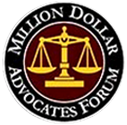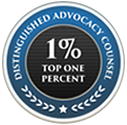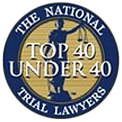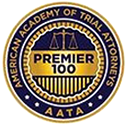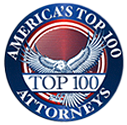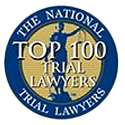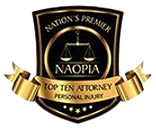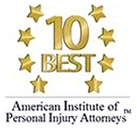Rear-end collisions rank among the most common types of motor vehicle accidents in Philadelphia and across Pennsylvania. These crashes often leave drivers confused about liability and wondering who will bear responsibility for damages. The assumption that the trailing driver automatically carries full blame has become deeply embedded in public consciousness, but Pennsylvania law reveals a more complex picture.
Traffic accidents involving rear-end impacts require careful examination of the specific circumstances surrounding each incident. While the driver who strikes another vehicle from behind frequently bears primary responsibility, Pennsylvania’s comparative negligence laws recognize that multiple factors can contribute to these collisions. The streets of Philadelphia present unique challenges that can complicate fault determination in rear-end accident cases. If you find yourself in a situation needing legal advocacy after a wreck, our Philadelphia car accident lawyers can help.
Common Misconceptions About Rear-End Accident Liability
The widespread belief that if you rear-end someone, it is always your fault stems from general traffic safety principles requiring drivers to maintain safe following distances. Pennsylvania Vehicle Code Section 3310 mandates that drivers must not follow another vehicle more closely than is reasonable and prudent. This statute creates a presumption that the trailing driver failed to maintain adequate space when a rear-end collision occurs.
However, this presumption can be overcome through evidence demonstrating that other factors contributed to the accident. Pennsylvania courts have consistently held that fault in motor vehicle accidents must be determined based on the totality of circumstances rather than simple assumptions about vehicle positioning at impact.
When Is a Rear-End Collision Not Your Fault?
Several scenarios can shift liability away from the trailing driver in rear-end accidents. These situations demonstrate that fault determination requires a thorough investigation of all contributing factors rather than relying on presumptions.
Sudden stops without warning represent one category where the lead driver may share liability. If a driver stops abruptly in traffic without brake lights or other warning signals, they may bear partial responsibility for the resulting collision. Pennsylvania law requires drivers to signal their intentions and avoid sudden maneuvers that could endanger other motorists.
Defective vehicle equipment can also alter fault calculations. When brake lights fail to function properly, other drivers cannot adequately prepare for stops or slowdowns. Similarly, if a lead vehicle experiences mechanical failure without providing appropriate warning signals, liability may shift partially to that driver.
The following situations commonly result in shared or transferred liability in rear-end accidents:
- Phantom vehicle scenarios where a third party causes the lead driver to stop suddenly before fleeing the scene
- Drivers who reverse into traffic or back out of parking spaces without proper observation
- Vehicles that stop or slow down inappropriately in traffic lanes without hazard signals
- Situations involving road rage or aggressive driving behaviors that contribute to the collision
Weather conditions and road hazards can further complicate fault determination. While drivers must adjust their following distance for conditions, unexpected obstacles or sudden weather changes may reduce the trailing driver’s liability if they took reasonable precautions.
Pennsylvania’s Comparative Negligence Laws
Pennsylvania follows a modified comparative negligence system that allows for shared fault in motor vehicle accidents. Under Pennsylvania law, each party’s negligence is compared to determine their percentage of responsibility for the accident. This system recognizes that multiple factors often contribute to collisions, including rear-end impacts.
Why are you always at fault in a rear-end collision becomes a question of whether your actions constituted the sole cause of the accident.
Pennsylvania’s comparative negligence rules mean that even if you bear primary responsibility as the trailing driver, the lead driver’s actions may also contribute to the collision.
The 51% rule in Pennsylvania means that you can recover damages as long as your fault does not exceed 50% of the total negligence. This principle applies even in rear-end accidents where the presumption typically favors the lead driver. If evidence shows that the front driver’s negligence substantially contributed to the collision, liability can be shared.
Insurance companies and courts examine various factors when applying comparative negligence principles:
- The speed and following distance of the trailing vehicle
- Whether the lead driver provided adequate warning before stopping or slowing
- Road and weather conditions at the time of the accident
- The presence of traffic control devices or construction zones
- Any mechanical failures or equipment defects that contributed to the collision
Factors That Can Shift Liability in Rear-End Accidents
Multiple circumstances can influence fault determination in rear-end collisions beyond the basic presumption of trailing driver liability. These factors require careful investigation and documentation to establish their impact on the accident.
Distracted driving by either party can significantly affect liability calculations. If the lead driver was texting or otherwise distracted when they stopped suddenly, this behavior may have contributed to the collision. Similarly, if the trailing driver can prove they were responding appropriately to traffic conditions before an unexpected distraction occurred, liability may be reduced.
Traffic violations by the lead driver often shift partial fault away from the trailing vehicle. Common violations include:
- Failing to use turn signals when changing lanes or preparing to turn
- Stopping in traffic lanes without proper justification
- Driving with non-functioning brake lights or hazard signals
- Making illegal turns or lane changes immediately before the collision
Construction zones and road work areas present special challenges for fault determination.
Pennsylvania law requires drivers to exercise extra caution in these areas, but unexpected lane closures or inadequate signage may reduce the trailing driver’s liability if they were following at a reasonable distance under normal conditions.
Proving Fault in Philadelphia Rear-End Accidents
Successful fault determination in rear-end collisions requires comprehensive evidence collection and professional legal analysis. The Philadelphia court system expects thorough documentation of all factors contributing to the accident.
Police reports provide crucial initial documentation but do not determine final fault for insurance or legal purposes. Pennsylvania police officers document their observations and may note apparent traffic violations, but fault determination ultimately depends on investigation by insurance adjusters and legal professionals.
Witness statements can prove invaluable in establishing the sequence of events leading to the collision. Independent witnesses who observed the accident from multiple angles can provide crucial testimony about vehicle speeds, signals, and other relevant factors.
Contact Gibbons & Crichton for Expert Legal Representation
Rear-end accidents in Philadelphia require skilled legal analysis to ensure fair fault determination and adequate compensation. The experienced Philadelphia car accident attorneys at Gibbons & Crichton have successfully handled countless rear-end collision cases throughout Pennsylvania, fighting to protect our clients’ rights and secure the compensation they deserve.
Contact Gibbons & Crichton today at 215-274-0173 for consultation to discuss your rear-end accident case and learn how we can help protect your legal rights.



